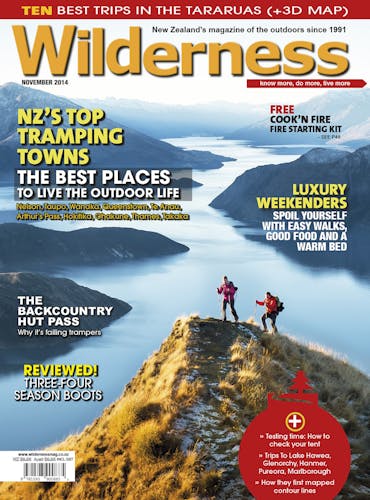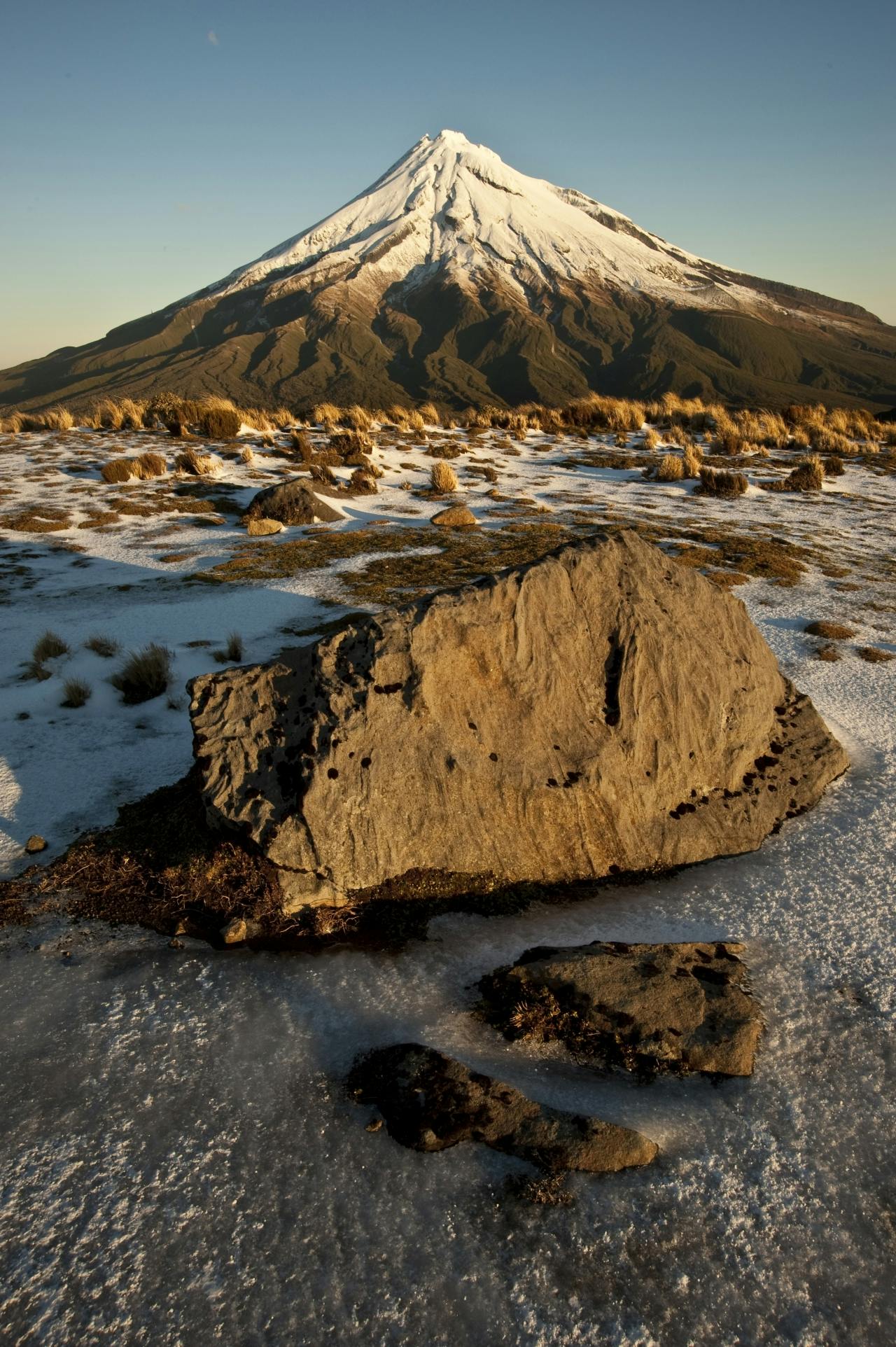Early on in their outdoor careers, most trampers realise that the best viewpoint of a mountain is seldom on the slopes of the peak itself. Rather, a slightly more distant vantage point usually gives the best perspective; somewhere close enough to ensure the mountain remains in close proximity, and therefore still an imposing sight, but not so close as to distort the perspective.
Fortunately, four of our most impressive mountains – Taranaki, Ruapehu, Aoraki/Mt Cook and Aspiring/Tititea – have just such viewpoints, all of them reasonably accessible to trampers.
Pouakai Range, Egmont National Park, Taranaki
Although a worthy trip in itself, the Round-the-Mountain that circumnavigates Mt Taranaki rarely has enough distance to render the summit at a pleasing angle. Too often, the track offers a somewhat warped perspective through bluffs, or the mountaintop is simply not visible at all.
In contrast, the neighbouring Pouakai Range offers some outstanding views of the volcano. It’s the eroded remnant of a once-great volcano that existed long before Mt Taranaki erupted into its present form. The Mangorei Track, which climbs up to Pouakai Hut, provides the most direct access. Just above the hut is a small boulder-strewn flat offering great views of Mt Taranaki, with the Ahukawakawa Swamp below. Alternatively, 20 minute’s walk to the east leads to a series of small tarns, which offer a pleasing foreground for photographers. More strenuous, but well worth it, is an hour’s tramp west to the summit of Pouakai. This modest 1400m summit has panoramic views of not only the great volcano, but the expansive arc of the Taranaki bight. You can even see the surf on the coastline.
Hauhungatahi, Tongariro National Park, Taupo
Like the Pouakai Range, Hauhungatahi (1521m) is a summit near enough to its neighbouring volcano to offer a grand viewpoint, but distant enough to ensure the whole mountain is spread before you. Hauhungatahi is the eroded remains of an old volcano, thought to be some 900,000 years old. As the mountain is part of the Hauhungatahi Wilderness, there are no official tracks onto the summit, but an old route from Erua is still followable, although often wet underfoot. Alternatively, you can scramble up through a short section of forest onto the peak’s northeastern slopes from the Mangahuia Track.
Sealy Range, Aoraki/Mt Cook National Park, Canterbury
As one of the few huts accessible to trampers in Aoraki/Mt Cook National Park, Mueller Hut is an unsurprisingly popular destination. From the White Horse Campground, a steep track climbs to the Sealy Tarns, then beyond, a poled route leads on to the crest of the Sealy Range. While Mueller Hut has excellent views of both Aoraki/Mt Cook and Mt Sefton, nearby Mt Ollivier (1933m) has an even better vista. As it was Sir Ed’s first summit, you’ll be treading in some historic footsteps too.
Cascade Saddle, Mt Aspiring National Park, Otago
In fine weather, Cascade Saddle is one of the finest tramping destinations in the Southern Alps. The saddle, situated on an undulating, tarn-strewn tussock ledge, overlooks formidable bluffs in the West Matukituki Valley and has remarkable views of Mt Aspiring/Tititea. Trampers can reach the saddle either from the Dart or West Matukituki Valleys. The poled route from Dart Hut is suitable for lesser-experienced trampers, while the Cascade Saddle Track that leads from the West Matukituki should be treated with due caution. In dry, fine summer conditions, experienced trampers should not have any problems, but it is steep and exposed, and potentially lethal when wet or snow-covered. The route reaches the ledge at a large marker pylon, where the views become increasingly expansive.








